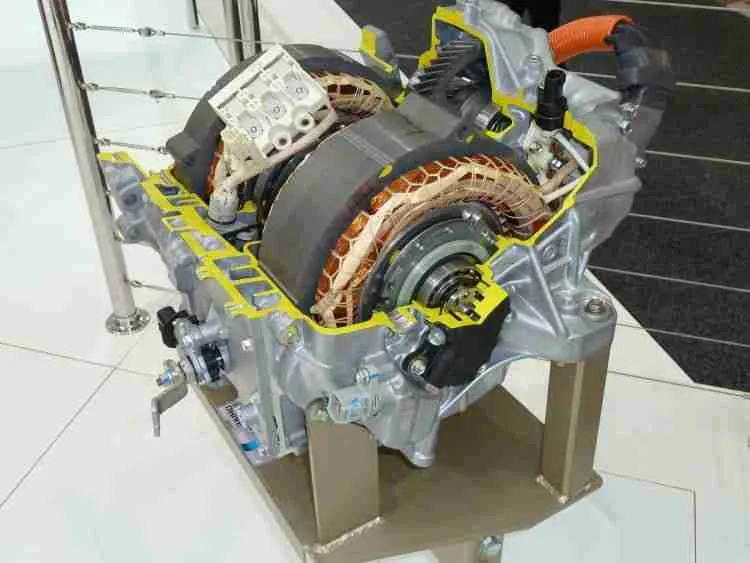Is it normal for a CVT transmission to whine?

What is CVT?
A CVT can, or a continuously variable transmission can, can be described as a shiftless transmission. In the case of two-wheelers (motorcycles), it can be described as a twist and go. It is basically an automatic transmission that can change smoothly over a whole range of effective gear ratios.
The system consists of two pulleys which help it achieve the continuous range of gear ratios and the system also works for reverse gear which is truly astonishing. The whole system is responsible for providing more useable power coupled with better fuel economy. Overall the whole driving experience becomes smoother.
How does a CVT work?
A conventional transmission has a fixed set of gear ratios and they are used for different purposes, the lowest gears as we all know are for putting the vehicle in motion, the middle gears to accelerate, and the higher gears to cruise and save a good amount of fuel.
Unlike a conventional transmission, a CVT has two pulleys with variable diameter. The input shaft is connected to the engine while the output shaft is connected to the wheels and there is a belt in connecting both.
As the two halves of the pulley come together the belt is forced to ride higher thus increasing the diameter of the pulley. This diameter change is the reason due to which we can achieve low speeds and high speeds. If the input pulley is smaller and output pulley is larger then the car runs at a low speed and vice versa. The only difference between the conventional transmission and a CVT is that the gear ratios are fixed in the former while the ratios we obtain in a CVT are continuous (a whole range) and hence the name.
Is it normal for a CVT transmission to whine?
Some might say yes and some might say no about the whining and while it is always better to get your car checked, let us dive into details about how to handle the situation when your car with a CVT transmission is making whining noises.
New users have had problems using CVT especially if they have driven a conventional manual or automatic transmission over the years. Basically, an engine can rev at any speed because of a CVT which sounds different to a person who has been driving conventional transmission cars. Sounds similar to a slipping clutch or a sliding transmission can be heard as the engine changes its note. This might concern someone who is not accustomed to a CVT and these sounds might be signs of trouble in a conventional transmission but for a CVT it is perfectly normal to make such noises. In this case, no need to worry.
This is not the only reason why the CVT makes whiney noises. The transmission fluid inside might have to be replaced. One such example is of a Ford Freestyle which has run around 65,000 miles. The car makes a whine at low speeds of 20-40 mph. In this case, the transmission fluid should be replaced. There are other remedies such as updating bulletins or checking for recalls and if the problem still persists, the car dealer should change the transmission fluid for free. If they don’t it will cost you around $400 to get a replacement done. It depends on the warranty the dealer is providing. For example, it might be a 10-year, 120,000-mile warranty. In this case, you can replace it for free. Experts recommend that you get the car checked if it makes whiney noises but it is usually a common problem with CVTs.
Advantages of using CVT
Engines cannot pull out a constant level of power at all speeds. There are only specific speeds at which an engine can extract maximum horsepower, torque, and fuel efficiency and there is no means of tying road speed to specific engine speed.
A CVT does nothing but vary the engine speed to extract the maximum power and fuel efficiency. A CVT can achieve quicker acceleration than a conventional transmission which helps it achieve the best fuel use.
Disadvantages of using CVT
Along with the whining noises and problems with transmission fluids as we had discussed earlier, drivers have had problems with the feel of the car as they floor it.
In a conventional transmission car, flooring the accelerator brings about a sudden surge in power which a lot of drivers crave for. On the other hand, a CVT provides a slow and gradual acceleration to maximum power. This makes it feel like the car is slower though it is actually not. Normally a CVT will out-accelerate an automatic.
There have also been questions about the maximum horsepower a CVT can handle but developments in technology have led to making these cars more full-bodied than ever before.
Final thoughts
CVTs are becoming increasingly popular over the years and dealers are providing better service for your car. Nissan has more than a million CVTs on the street right now and they are providing much more robust models with time.
If your car is making a whining noise, it is still recommended you go get it checked out but this is a common problem that comes with a CVT. But along with it comes the future. These cars will provide you with a better experience overall and leave out a lighter footprint on the planet. There have been innovations following the same basic principle which are used in hybrids which are no doubt the future of automobiles. Whining noises or a better experience? Your call!













No Comment